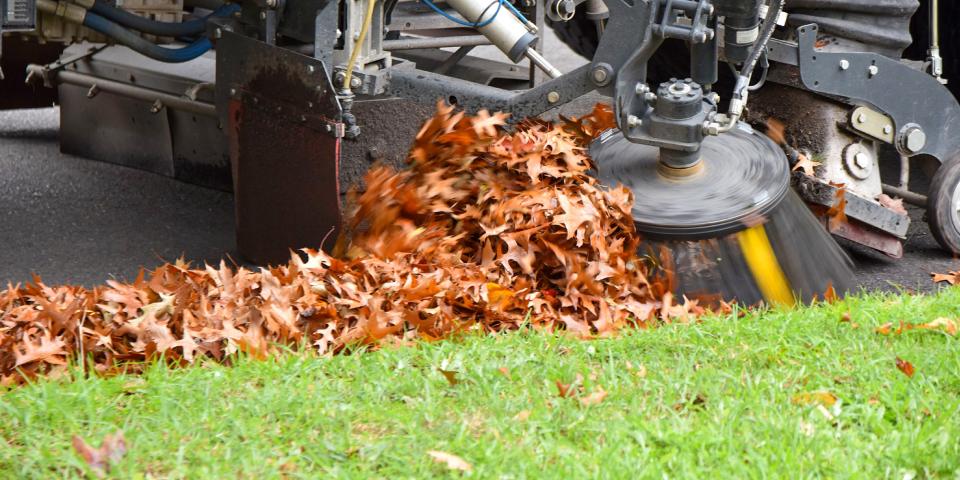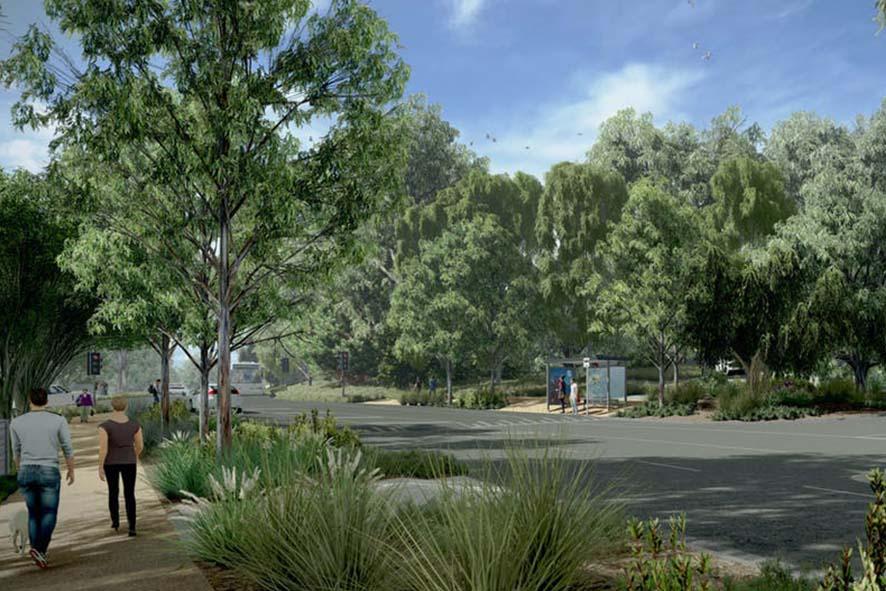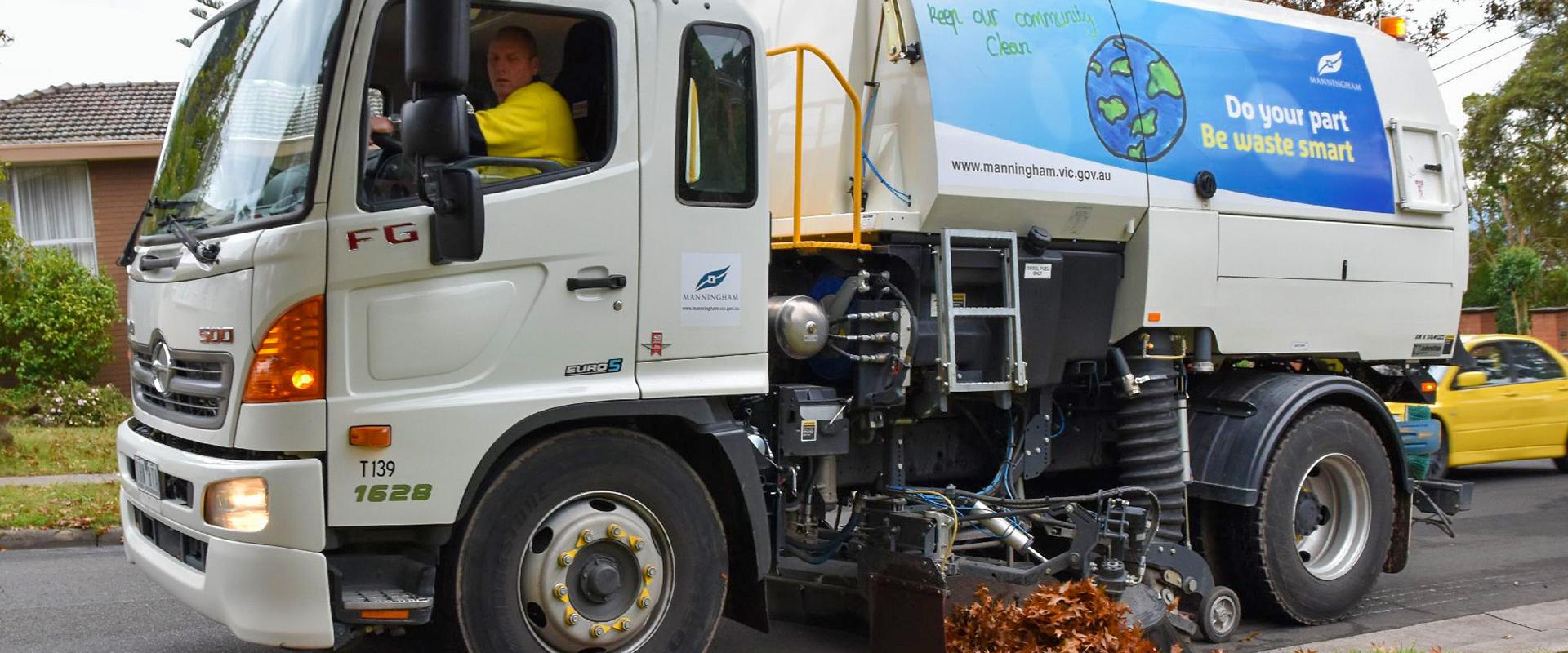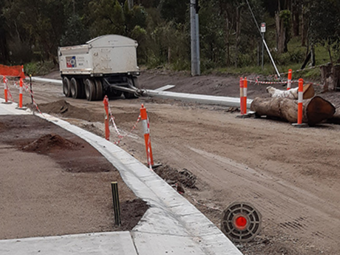There is a legal process to enable the planning scheme to be amended. You can find the recent changes to our planning scheme below.
How the amendment process works
-
Council meeting
Resolution to seek authorisation from the Minister for Planning to prepare and exhibit an amendment
-
Authorisation may or may not be granted by the Minister for Planning, or may granted subject to conditions.
-
Public exhibition
Opportunity for the public, and other key stakeholders, to make a written submission in support of, or objection, to the proposed amendment
-
Council meeting
Consideration of all written submissions. Council must then decide to either:
- change the amendment in the manner requested
- refer submissions to an independent Panel for review
- abandon all or part of the amendment
-
Panel hearing
Consideration of the submissions by an independent Panel, appointed by the Minister for Planning
-
Council Meeting
Consideration of the Panel's findings and recommendations. Council must then decide to either:
- adopt the amendment (with or without changes), or
- abandon all or part of the amendment
-
Submission of final adopted amendment by Council to the Minister for Planning for approval
-
Minister for Planning approves or refuses the amendment
Approved amendments
To view all planning scheme amendments, you can:
- Download the list of all Manningham Planning Scheme amendments to find the number you need.
- Search for your amendment on the planning scheme amendment finder.
Manningham Council is preparing a submission to the State Government's proposed new housing targets.
Manningham Mayor, Councillor Carli Lange, said the submission would draw on Council’s significant strategic planning work and community feedback.
“We’ll use our existing planning and community data to advocate for a range of outcomes that support Manningham’s current and emerging needs,” Cr Lange said.
The State Government has proposed a draft target of 39,000 new dwellings in Manningham by 2051. This target represents a 76 per cent increase in dwellings over the next 26 years or around 1,500 dwellings per year.
Cr Lange said this represented a significant increase in growth projections for Manningham.
“Over many years, Manningham Council has accepted growth, planned for growth and managed growth in a balanced and incremental way – in close consultation with our local community.
“The increased growth projections, and absence of detailed information provided, are a concern for Council, however we welcome the opportunity to engage with the State Government to ensure positive outcomes for the future of housing in Manningham.
“We’re eager to better understand the thinking and data behind the targets and how the state and federal governments will support the market to provide this additional housing,” the Mayor added.
Council recently undertook comprehensive community engagement on its Residential Discussion Paper and Activity Centre Design Concepts. These initial phases of engagement will assist in preparation of the draft new Manningham Residential Strategy and Activity Centre Design Guidelines.
As part of the Residential Discussion Paper consultation, more than 70 per cent of respondents said the ‘look and feel of their suburb’ was their main reason for living there.
Respondents also identified a need for more diverse housing types, including more single level townhouses for downsizers and larger housing to suit intergenerational families.
When asked about preferred housing types needed for the future, single dwellings were the top choice (40 per cent), followed by townhouses (23 per cent).
The community expressed similar values and preferences in their feedback on the Activity Centre Design Concepts.
Around half of the survey participants identified as visiting Park Orchards and Warrandyte Goldfield activity centres most often. Many of these respondents urged the importance of protecting these areas from development because of the sensitive environment, valued character and amenity, and lack of public transport.
“The valuable community insights received through our recent consultations will help inform our submission to the State Government,” Cr Lange said.
“Plans for future housing growth should respect the valued neighbourhood attributes of local communities.
“Planning also needs to ensure that the housing delivered is diverse and provides for a range of incomes, lifestyles and life stages. It should also consider the impact on core infrastructure (roads, footpaths, drainage, community facilities), the environment, public transport, traffic and more.
“In addition to commercial development, we also expect that our major and neighbourhood activity centres will play an integral role in accommodating urban growth and development in Manningham,” she said.
To date this financial year, Council has approved planning permits for 651 dwellings – with 88 per cent of all our decisions made within the 60-day statutory timeframe.
Like other Councils, Manningham has issued permits for many homes that have not yet been built. As has been widely reported, the delivery of these already approved homes on the ground are challenged by the current economic conditions and rapidly increasing construction costs.
Council will keep the community informed throughout the engagement process with the State Government.
Residents are encouraged to have their say on the State Government’s plan for Victoria or learn more about the draft housing targets at engage.vic.gov.au/shape-our-victoria.
Managing our trees is essential for maintaining the health and wellbeing of our community and surrounding environment.
We have over 90,000 street trees in Manningham and countless more throughout our reserves and natural areas. We strive to protect and enhance our tree population to benefit us now and our future generations.
How we manage our trees
Our tree management activities include:
- street tree pruning program
- electric line clearance
- tree planting and maintenance
- tree risk management
- storm response
- tree protection
- urban greening project.
Tree planting program
Each year we plant up to 3000 trees throughout our streets and reserves. Our tree planting program is a critical part of future proofing Manningham against the negative effects of climate change.
Tree planting schedule
Street tree planting is done between May and September each year. Timings may vary to make the most of planting conditions.
Species of trees planted
Manningham has been divided into 18 precincts. Species have been selected based on urban forest principles, biodiversity values, risk, and landscape amenity. The species palette, a selection of native and exotic trees, will establish the long-term character for a street or main road.
Request a new street tree
You can make a request for an additional tree on your nature strip or to replace a dead or damaged tree.
-
How to request a new tree
Requests for new trees can be made via the online form or by calling our Customer Service team on 9840 9333.
-
What happens next?
The site will be inspected by our arborist to determine if the location is suitable for planting.
-
When will the tree be planted?
If your request is approved, tree planting usually takes place during the following year’s planting season.
-
What type of tree will be planted?
The type of tree will be decided by our arborist based on our Street Tree Planting Guide.
The Manningham Community Panel has reached a significant milestone, charting a course for the future after delivering its final recommendations to Council.
Manningham Mayor Councillor Deirdre Diamante said the Panel’s insights will be invaluable in ensuring that the Council’s strategic plans are grounded in the community's needs and aspirations.
“By listening to the voices of our community, we’re ensuring that our decisions and actions reflect and align with what matters most to our residents,” Cr Diamante said.
“The Panel has played a crucial role in this process, comprising members from diverse age groups, cultural backgrounds and geographic locations that represent the unique tapestry of our community.
“This collaborative approach will help enable us to create a more inclusive, resilient, sustainable and vibrant community for all.”
The Panel was established to identify Manningham's key priorities, challenges and opportunities – to help guide the Council’s strategic plans. This includes the Community Vision 2040, the four-year Council Plan, and the 10-year Asset and Financial Plans.
Throughout the process, Panel members deliberated for approximately 1,680 collective hours and heard from over 50 speakers from Council and community.
They handed over their recommendations to Council at the final meeting on 1 February 2025. They span several themes including community safety, transport, open spaces and more.
“Over the coming weeks, we’ll prepare a response to each of the panel’s recommendations, including how they will be implemented or the reasons for not supporting any recommendation,” Cr Diamante said.
“We’re sincerely grateful to the panel members for their time and efforts during this dynamic process and committed to implementing the panel’s recommendations to the fullest extent possible. We’ll ensure their insights are carefully considered in all our decision-making as we plan ahead for Manningham,” the Mayor added.
For further information and stay up to date, visit yoursay.manningham.vic.gov.au/help-shape-manninghams-future
Manningham Council is investigating options to rehabilitate the site of the former Doncaster Quarry after identifying issues that prevent the land from being developed in its current state.
Earlier this year, Council sought expressions of interest for the potential development of the former quarry site, located at 620-628 Blackburn Road in Doncaster East.
This process was part of Manningham Council's Strategic Property Portfolio initiative, which aims to find new ways of funding the increasing costs of services and infrastructure locally.
Due to issues with the quarry site limiting the financial return of any proposed development, the expressions of interest received were not found to be feasible.
Manningham Council Chief Executive Officer Andrew Day said due to issues with fill, compaction, water and slope, the site will need to undergo rehabilitation before it could be developed.
“Our focus for the former Doncaster quarry site has shifted to rehabilitating the land site to support potential further development.”
The first step will be an investigation into what is required to remediate the land for future use and development.
The findings of this investigation will be presented to Council mid next year.
“We only get one opportunity to determine the future of this site, and we want to ensure the best financial return for the community. Once we understand what is required to rehabilitate the site, we will be in a better position to assess its potential,” Mr Day added.
For more information, go to Your Say Manningham.
When do you need an access across reserves permit?
You need an access across reserves permit to get access to private property through an adjoining Council reserve or Council property for any building works or similar.
There are some reasons where we may not issue a permit depending on:
- seasonal conditions - we are less likely to approve a permit during winter as there is a higher likelihood of damage to our reserves and land or
- environmentally sensitive areas.
Who can apply?
The property owner and/or their contractor can apply for this permit.
How much does it cost?
The application fee is $161.90 (non-refundable).
You will also need to pay a refundable security deposit (minimum $250 to $2,000 plus).
How to apply
To apply for consent you will need:
- A completed application form
- Supporting documentation.
What happens next?
Allow 14 business days for us to review your application.
The following process once we receive your application:
-
We will conduct inspections to determine the security deposit, refunds and damages.
We will advise you by email if your application is approved or not. If approved, we will issue a tax invoice for both the permit fee and the security deposit.
-
You pay the tax invoice and security deposit.
The permit will be sent to you by email.
-
Read the permit conditions carefully.
We may revoke the permit if conditions are not met and an infringement may be issue.
-
Upon your advice, we will inspect the site after the work has ceased to determine if any reinstatement works are needed prior to releasing the refundable security deposit.
- If there is no damage and the inspection is signed off as satisfactory, we will return your security deposit. The security deposit is paid as a bank transfer into your nominated bank account.
- If any damage is noted, we will contact you to arrange reinstatement works. The permit-holder is responsible for all damage caused by works, and the damage must be reinstated to our satisfaction.
How to cancel
Contact us to cancel your application.
With support from Manningham Council, the new Jackson Court Traders Association has seen the launch of its first initiative – a welcoming new sign at Jackson Court Shopping Centre.
Formed just over a year ago, the Jackson Court Traders Association advocates for its businesses, collaborates with Council, pursues funding opportunities and creates initiatives to promote the popular activity centre.
Jackson Court has more than 90 businesses, making it one of Manningham’s busiest and most vibrant centres.
The new sign on Doncaster Road is designed to showcase the mix of local businesses and advertise the centre.
Manningham Council supports activity centres with infrastructure upgrades, business support and planning. At Jackson Court, Council helped establish the traders’ association with registration, governance, communication and business development support.
President of the Jackson Court Traders Association, Con Valsamis said the sign brings a new look and increased advertising space for businesses at the centre.
"As a group, we have so many ideas on ways to continue improving this important shopping district. This new signage is a big step towards us achieving these goals,” Mr Valsamis said.
“A big thank you to my fellow committee members for their passion and dedication and to Manningham Council for their support in setting up our traders association.”
“We want to bring this area to life and really show people what we at Jackson Court have to offer,” Mr Valsamis added.
You can follow Jackson Court Traders Association on Instagram @jacksoncourt.doncaster.
Manningham Council property purchase sets the stage for new community house
Manningham Council has signed the contract to purchase 576-578 Park Road, Park Orchards as part of its planning for a new Park Orchards Community House and Learning Centre.
A priority action in Council’s Community Infrastructure Plan, discussions and advocacy have already commenced for the replacement of this popular neighbourhood house and it is hoped that this significant investment by Council will be the catalyst for investment from other levels of government.
Manningham Mayor, Deirdre Diamante, said the existing community house needs replacing to bring programs and services together.
"The Community House is widely used and offers a variety of programs and services in learning, fitness and art for all ages, and includes a well-loved childcare facility.
“The current building is coming to the end of its useful life, has limited accessibility and is too small to cater to all programs. These limitations have resulted in programs moving to different locations and spread across multiple local venues.
“By bringing these programs together into one building with better access and more space, we can improve efficiency and better support the community’s growing needs.”
The location of the new property, adjacent to the existing Community House at 572 Park Road, will allow for more space for the variety of programs on offer.
“Located in the heart of Park Orchards, as part of a community and education precinct and near public bus transport, the site will maintain convenient access to childcare, schools, recreational areas, and shops.” Cr Diamante added.
The purchase of 576-578 Park Road is part of Council’s long-term planning to replace this important neighbourhood house for Park Orchards.
Neighbourhood houses are predominantly funded by government grants and additional state and commonwealth government funding will be needed to deliver this new community facility.
“We have purchased this property as part of our long-term plan for the community house and local area. We’re pleased to be able to secure a site for a new centre in Park Orchards and will continue to advocate for State and Federal funding to deliver it.”
The purchase was funded by Council’s Strategic Fund which is part of its 10 Year Financial Plan 2024/25 to 2033/34.
For more information, visit Your Say Manningham.
This online webinar will provide tips on creating healthy, affordable lunchboxes for all ages.
We’re partnering with Nutrition Australia for two free online webinars as part of Healthy Lunchbox Week - 9 to 15 February 2025.
- Healthy lunchbox tips for kindergarten and school starters
- Budget-friendly lunchbox tips
Learn how to:
- balance key food groups
- keep grocery costs down
- save time with simple prep
- change it up with a recipe and leftover ideas.
Presented by Monash Council, City of Kingston, Knox City Council, Manningham Council, and Maroondah City Council.
UPDATED: 3 December 2024
Manningham homeowners can now claim significant subsidies and discounts on high-quality, affordable electrical appliances, rooftop solar, and batteries.
The 2024 Solar Savers program includes subsidies of up to:
| All residents |
|
| For pension concession card holders |
|
These subsidies are only available for products purchased through the Solar Savers program.
You may also qualify for State and Federal Government rebates.
Find out how much you can save
Get a free quote from a trusted source. Your quote will include:
- indicative costs
- rebates
- expected energy and cost savings.
Why you should make the switch to electric
There are many benefits when you electrify your home:
- Reverse cycle air conditioners are a clean, safe way to heat and cool your home, with lower running costs.
- Modern electric hot water heat pumps are highly efficient and provide low-cost hot water, especially when run with your solar
- With solar, you can reduce energy bills and future-proof against increasing energy costs
- If you already have solar, electrifying your appliances can allow you to maximise your savings
Home electrification helps our community transition towards clean, renewable energy, reducing our environmental impact.
Visit Electrify Your Life to learn more about going all-electric.
Read our plan to reduce emissions in Manningham: Manningham Climate Emergency Response Plan.
Find out more
To learn how to modernise your home with efficient electric appliances, solar energy, and batteries, you can:
- visit Electrify Your Life for useful links and resources
- visit Solar Savers to register for advice and a free quote
- attend a Solar Savers information session or an Electrify Everything webinar.
Have a question?
Contact us on 9840 9333 or at manningham@manningham.vic.gov.au.
To celebrate National Recycling Week, we are hosting an online Q and A session about all things waste.
Not sure what item goes into each bin?
Get confused about what can and cannot be recycled?
Would you like to know more about what is happening the in the waste industry?
Come along to our friendly Q and A session so we can answer all of your queries and dispel any myths!
Understanding the lived experiences of local residents will be a crucial step to improving road safety in Manningham.
Manningham Council is seeking community input on road safety issues to inform the development of its new 10-year Road Safety Strategy.
Council will use this feedback, along with the latest crash and incident data, and feedback from Victoria Police and other road safety partners to develop the strategy.
Since implementing the previous Road Safety Strategy in 2010, Manningham has seen a downward trend in crash incidents. However, between 2017 and 2023, there were still 409 serious injuries and 11 fatalities on Manningham roads.
"We're striving for vision zero in Manningham, which means nobody is seriously injured or killed on our roads. Because one is one too many," said Manningham Mayor, Councillor Carli Lange.
"We're taking a data-driven approach to road safety. Hearing from our community about their lived experiences is critical to ensure we can draw a bigger picture and help people feel safe on our roads."
Manningham’s previous Road Safety Strategy delivered improvements to infrastructure through the Manningham Bicycle Strategy and roads program. It also supported the ongoing implementation of awareness and behavioural programs such as the Manningham-Whitehorse L2P program and Wise Driver program.
The new strategy will provide a framework and action plan that aligns with the Victorian and National Road Safety Strategies 2021-2030 and adopt Safe System principles to reduce crashes, particularly those involving pedestrians and cyclists. It will consider infrastructure maintenance and improvements, advocacy to state and federal governments, and road safety education and outreach programs.
The Transport Accident Commission is funding the strategy renewal under its Local Government Grant Program.
The community survey will be open until 5.00pm on Monday 17 June.
Council will present the draft strategy for consultation via public exhibition later this year.
For further information, go to yoursay.manningham.vic.gov.au/manningham-road-safety-strategy-2025-2034.
To celebrate National Recycling Week, come along to our information session about all things waste.
Not sure what item goes into each bin?
Get confused about what can and cannot be recycled?
Would you like to know more about what is happening the in the waste industry?
Come along to our friendly session so we can answer all of your queries and dispel any myths!
Manningham has a 24-hour Cat Confinement Order to help protect your cats’ welfare.
Cat confinement means your pet cat is not allowed outside of your property boundary and is endorsed by animal welfare organisations including the RSPCA.
Keeping your cat at home is:
Keeping your cat at home is one of the best things you can do for them!
Research shows a cat contained to your property can live up to four times longer than a cat who is free to roam (Australian Veterinary Association, 2014).
It is a common misconception that cats need to roam. If their basic needs are met, cats enjoy longer and healthier lives when safely contained to the property.
Serious problems can happen if cats roam outdoors, particularly at night. Around 80% of accidents involving cats happen at night. (Animal Welfare Victoria)
Wandering cats are also exposed to, and can transmit, disease, can be hit by cars, become lost and fight with other cats and foxes.
We receive consistent complaints about cats entering neighbouring properties and spraying or defecating, fighting or making noise.
See more information below on engaging with neighbours who have a roaming cat.
Even well-fed cats will hunt and this can have a significant impact on local wildlife, including birds and possums.
Most of the reports Wildlife Victoria receives are about wildlife injured by domestic dogs and cats, this is why it is important for all Manningham pet owners to exercise responsible pet ownership.
See more information below, under ‘How is Cat Confinement Order being applied by Council’
What happens if my cat is caught outside my property?
We are encouraging you to be a responsible pet owner and to keep your cat within your property.
Our Local Laws officers will work with you to ensure compliance with the order, however we will be acting on reports from the community about roaming cats.
Enforcement of the cat confinement order will be assessed on an individual basis, as we work with our cat owners to promote responsible pet ownership.
If your cat is registered and microchipped this will assist Council Officers getting your cat home to you safely should your cat become lost.
Keeping your cat safe and healthy
Yes, as long as you have effective control in a securely fitted harness, or the cat is in a carrier.
Lots of animal welfare organisations provide tips for training your cat to walk on lead and there are a range of harnesses and leashes available specifically for cats.
For tips and advice visit:
Resources are available to assist in the transition to helping your cat to an indoor (or an outdoor enclosure) lifestyle.
Some simple methods include feeding your cat indoors and not letting your cat back outside as soon as they're finished eating.
Young cats should adapt quite quickly to an indoor lifestyle, while cats used to roaming will take a little more time and training.
Often gradually increasing their time indoors will help to make the transition easier for your cat.
There are lots of ways to make indoors a fun and enriching place for your cat. Adding a few cat-friendly activities to our home will fulfill your cat’s natural instincts to search for food, play, as well as their climbing and clawing needs.
For tips and advice visit:
Yes. Your cat is allowed outdoors, providing it remains within the boundaries of your property.
For owners with an outdoor area, you can:
If a cat is kept active and given enrichment toys, then keeping your cat at home will have little effect on its mental health. As noted above, cats are still allowed outside, so long as they stay within your property boundary.
Indoor cats are less susceptible to disease and injury. A cat allowed to roam free has an average life expectancy of only three or four years, compared to 15 years or more for a cat kept at home (Animal Humane Society).
If you know the owner of the cat we encourage you to speak with them first. If the issue cannot be resolved and you wish to make a formal complaint, contact us.
If you feel uncomfortable about confronting a neighbour about their wandering pet, we have provided a printable resource for you to anonymously let them know about their cat's unwanted roaming.
If you have issues with cats trespassing contact us to address your concerns. Council Officers may provide a trap to assist in identifying the owner of the cat.
It’s important that pet cats are microchipped and registered so we can distinguish them from unowned cats and reunite them with their owner if they become lost. It is often hard to tell the difference between a pet, a stray, or a feral cat, as some pet cats will display different behaviours depending on their characteristics. Quite often stray and feral cats will disappear around people unless they have built up trust with that person.
How is the cat confinement order being applied by Council?
Our officers are acting on complaints from the community about roaming cats. Our aim is to educate owners and provide assistance on how to safely contain cats on their property.
A growing number of Victorian Councils have implemented, or are considering introducing, cat confinement laws. As of March 2024, the new regulations will bring Manningham in line with 38 of 79 Victorian councils that have some form of cat confinement in place. A further 16 councils are currently considering introducing cat confinement laws.
Yes. It is legal for someone to humanely trap a trespassing cat. If you know the owner of the cat, we encourage you to speak with them first. If the issue cannot be resolved and you wish to make a formal complaint, contact us.
Cats are natural predators of native wildlife, whether they are owned or stray/feral.
Approximately 78 per cent of cats allowed to roam will hunt and this presents a major threat to our native animals. On average, each roaming, hunting pet cat kills more than three animals every week (Invasive Species Council 2023).
Most of the reports Wildlife Victoria receives are about wildlife injured by domestic dogs and cats, this is why it is important for all Manningham pet owners to exercise responsible pet ownership.
Containing your cat within the boundaries of your property (especially at a young age) will lower its natural predation and will assist in the protection of local wildlife.
If the cat is microchipped and/or registered with Council we will make all necessary attempts to reunite the cat with its owner. If the owner of a cat can’t be identified or contacted, it will be transferred to the Manningham Pound where it will undergo a health and behavioural assessment to determine suitability for adoption.
When was the cat confinement order implemented?
The order began 1 April 2024 with an evaluation period scheduled for December 2025.
The decision was guided by feedback provided at our Domestic Animal Management Plan consultation, community consultation, reports about nuisance cats, reports of environmental impacts of cats in parks and reserves, and reports of attacks on wildlife.
Registration
You can register your cat online.
As part of the animal registration process there are reduced fees for desexed animals as well as if the owner is entitled to concession.
Yes. All cats over the age of three months are required to be registered under state law. If your cat escapes your property, then these fees will assist in returning your cat to you. Registering your pets helps Council reunite you with your pet as Council will be able to quickly trace them back to you.
Useful links
Find permits, services and guides relating to parking, roads and footpaths
Report an issue with a tree on public land
You can report a tree or tree branch that is obstructing the road, footpath or is in danger of falling or causing damage.

Apply for works, drainage and stormwater connection permit
You will need a Works and Drainage Permit (WDP) to undertake works that impact Manningham’s assets.

Report a blocked or damaged street drain
We are responsible for an extensive network of underground drains that prevent storm-water run-off from impacting property, footpaths and roads.

Drainage projects design and construction
Find out how we're improving drainage and flood mitigation.

Footpath maintenance and construction
Find out about new path projects in Manningham including footpaths, shared paths and shared trails.

Street sweeping
We are responsible for maintaining 608km of local roads within Manningham. Find out more about our street sweeping program.
Can't find what you're looking for?
Did you know children consume around 30 per cent of their daily food intake at school? Most of this comes from the contents of their lunchbox.
We’re partnering with Nutrition Australia for two free online webinars as part of Healthy Lunchbox Week - 9 to 15 February 2025.
- Healthy lunchbox tips for kindergarten and school starters
- Budget-friendly lunchbox tips
This online webinar will provide tips and tricks for packing healthy lunchboxes for little ones starting kinder or school.
Learn how to:
- balance key food groups
- keep grocery costs down
- save time with simple prep
- change it up with a recipe and leftover ideas.
Presented by Monash Council, City of Kingston, Knox City Council, Manningham Council, and Maroondah City Council.
Triptych is a play between sculpture and painting and takes the the shape of a game or wooden toy that addresses the subject of childhood, and of those who live in its field: children.
It is a work that addresses the future, and that they will – one day - be our future.
This project was commissioned as part of the redevelopment of the former Templestowe Primary school as the Manningham Templestowe Leisure Centre.
Location of artwork
- Corner Foote and Anderson Streets, Templestowe, VIC 3106
- View on map
Related downloads
Standing approximately 13 metres high and weighing 12 tonnes, Sentinel was the first of three sculptures commissioned by Manningham Council to mark the major gateways to the city.
Casting a watchful eye over the area, its curved shapes symbolise the two creeks of the municipality - the Mullum Mulum and the Koonung. They enclose the blue oval form representing the City of Manningham.
Also by Inge King - Boulder.
Location of artwork
- Doncaster Road exit, Eastern Freeway / 401 Doncaster Road, Doncaster, VIC 3108
- View on map
About the artist
Inge King AM was pivotal in developing and diversifying abstract sculpture in Australia and worked actively until she was 98 years old.
Born in Berlin, King trained at the Berlin Academy from 1937 to 1938, the Royal Academy School in London in 1940, and the Glasgow School of Art, Scotland, from 1941 to 1943. She taught art in Glasgow and London from 1944 to 1949. After moving to Australia in 1950, she taught sculpture at the Royal Melbourne Institute of Technology from 1976 to 1987.
A powerful female voice in the male-dominated sphere of industrial sculpture, King was part of the Centre Five group whose mission it was to help foster greater public awareness of contemporary art while integrating large-scale sculpture with architecture.
King used industrial techniques and surface finishes to construct refined geometric sculptures. With sequential shapes and formalist progressions, her works give a sense of movement frozen in time. The artist considered sculpture ‘vision in motion’ and described her work as ‘drawing from a thousand different angles’.
The importance of the viewer’s perspective and their dynamic experience of each object and its environment was central to King’s practice.
Learn more about Inge King
- Website - National Gallery of Australia
- Website - National Gallery of Victoria
- Website - Australian Centre for Contemporary Art
Related downloads
A painting in light.
A simple construction of LED lights, running the length of the underpass passage, projects light across the ceiling and down the walls. It creates the visual equivalent of an impressionist painting through which the pedestrian passes.
Creating the illusion of greater spaciousness within the underpass, the entire walls and ceiling of the ramps and the underpass are uniformly surfaced with a soft large, rectangular format ceramic tile, aligned vertically to enhance the sense of space.
The projected “light painting” to both ceiling and walls blurs the interface between the two surfaces, again helping to alleviate the oppressive sensibility of the low ceiling.
The project was funded by Manningham Council in collaboration with Department of Infrastructure (DOI) through the Local Area Access Program (LAAP). The fund was established by the Victorian Government to provide funding for the improvement of local access for walking, cycling and public transport.
Location of artwork
- Doncaster Road underpass - 679 - 681 Doncaster Road, Doncaster, VIC 3108
- View on map
About the artist
Light art and glass art are terms commonly applied to the site specific public art of artist Warren Langley.
In a career spanning over 40 years, the past 20 years has seen an increasing use of light as a principle design element to create public art interventions which undergo day to night transformations.
Langley’s ouvre addresses the notion of sight/site, both visual and contextual and his 40 year portfolio of artworks for the built environment span all manner of materials and processes. He is most well known for his large scale works in light and glass.
Learn more about Warren Langley
- Website - Warren Langley
- Instagram - @warren_langley_artist
Related downloads
Boulder belongs to a series of twelve sculptures created between 1966 and 1972. They were inspired by the landscape off the coast of Western Australia.
"My fascination was with the precarious balance of large forms perched on top of small ones, emphasising movement at the same time. The rough welding is intentional; the small pieces are incorporated to enliven the smooth surface of the simple shapes. I see these works as part of the landscape, the black colour contrasting with the grey green of the surrounding foliage. The represent a move away from earlier figuration.” - Inge King
Also by Inge King - Sentinel.
Boulder was acquired by the City of Doncaster and Templestowe in 1994. We gratefully acknowledge the donations contributed towards the purchase of the work by Potters Cottage, Warrandyte Arts and Education Trust, and Warrandyte Community Market Committee.
Location of artwork
- Warrandyte Community Centre - 168 Yarra Street, Warrandyte VIC 3113
- View on map
About the artist
Inge King AM was pivotal in developing and diversifying abstract sculpture in Australia and worked actively until she was 98 years old.
Born in Berlin, King trained at the Berlin Academy from 1937 to 1938, the Royal Academy School in London in 1940, and the Glasgow School of Art, Scotland, from 1941 to 1943. She taught art in Glasgow and London from 1944 to 1949. After moving to Australia in 1950, she taught sculpture at the Royal Melbourne Institute of Technology from 1976 to 1987.
A powerful female voice in the male-dominated sphere of industrial sculpture, King was part of the Centre Five group whose mission it was to help foster greater public awareness of contemporary art while integrating large-scale sculpture with architecture.
King used industrial techniques and surface finishes to construct refined geometric sculptures. With sequential shapes and formalist progressions, her works give a sense of movement frozen in time. The artist considered sculpture ‘vision in motion’ and described her work as ‘drawing from a thousand different angles’.
The importance of the viewer’s perspective and their dynamic experience of each object and its environment was central to King’s practice.
Learn more about Inge King
- Website - National Gallery of Victoria
- Website - Art Gallery of NSW
- Website - National Gallery of Australia
- Website - Australian Centre for Contemporary Art
Related downloads




